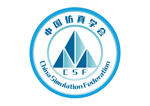Journal of System Simulation
Abstract
Abstract: In order to overcome the problems induced by illumination andocclude in facial expression recognition and reduce the time required by sparse representation classification, the facial expression recognition algorithm withfusion of HOG feature and improved KC-FDDL dictionary learning sparserepresentation is put forward. Improved K-means cluster and Fisher discriminationdictionary learningis implemented on thetraining setgenerated by extracting HOG features of normalized expression image.Facial expression classification is conducted by thesparse representation with weighted residuals. Experimental results on the Cohn-Kanade databaseshow that this method is lower time-consumingand more accurate for similar facial expression classification than other facial expression classification methods.
Recommended Citation
Ming, Li; Peng, Xiujiao; and Yan, Wang
(2019)
"Facial Expression Recognition Based on Improved Dictionary Learning and Sparse Representation,"
Journal of System Simulation: Vol. 30:
Iss.
1, Article 4.
DOI: 10.16182/j.issn1004731x.joss.201801004
Available at:
https://dc-china-simulation.researchcommons.org/journal/vol30/iss1/4
First Page
28
DOI Link
https://doi.org/10.16182/j.issn1004731x.joss.201801004
Last Page
36
CLC
TP391
Recommended Citation
Li Ming, Peng Xiujiao, Wang Yan. Facial Expression Recognition Based on Improved Dictionary Learning and Sparse Representation[J]. Journal of System Simulation, 2018, 30(1): 28-36.
DOI
10.16182/j.issn1004731x.joss.201801004
Included in
Artificial Intelligence and Robotics Commons, Computer Engineering Commons, Numerical Analysis and Scientific Computing Commons, Operations Research, Systems Engineering and Industrial Engineering Commons, Systems Science Commons

